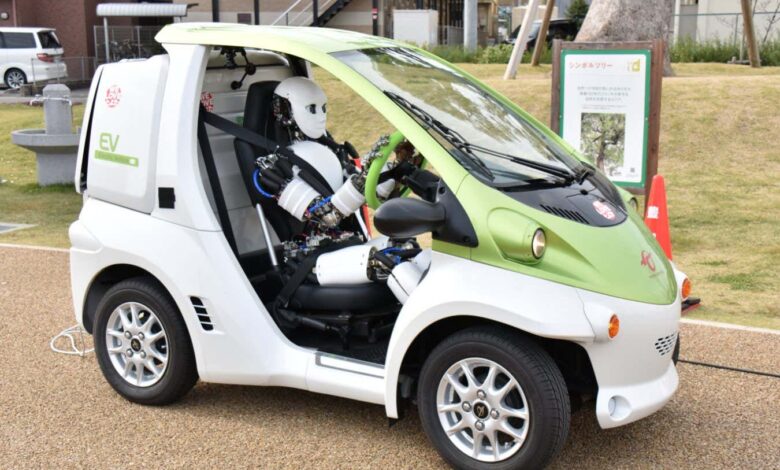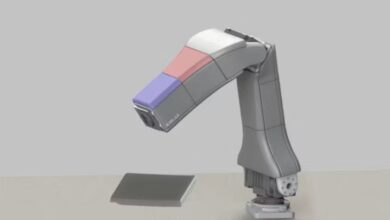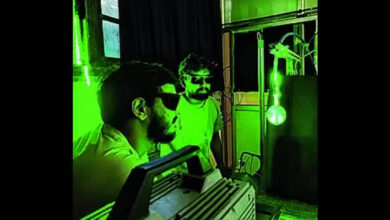Watch a humanoid robot driving a car extremely slowly

A humanoid robot that can drive a car could one day be used as a robot chauffeur, though its creator concedes that this may take at least 50 years.
Most driverless cars work very differently to a human driver, using artificial intelligence and custom mechanical systems to directly move the steering wheel and pedals. This approach is much more efficient and simpler than using a humanoid robot to drive, but it is also bespoke for each particular car.
Kento Kawaharazuka at the University of Tokyo and his colleagues have developed a humanoid robot, called Musashi, that can drive a car in the same way as a human. Musashi has a human-like skeleton and musculature, as well as cameras in each of its eyes and force sensors in its hands and feet. Artificial intelligence systems work out what actions are needed to drive the car and react to events such as traffic lights changing colour or a person stepping in front of the car.
The robot can only perform a limited range of driving tasks at present, such as driving forward in a straight line or taking a right-hand turn, moving at speeds of around 5 kilometres per hour on non-public roads. “The speed of the pedal or the velocity of the car is not high. Also the handling of the car is not fast compared to human beings,” says Kawaharazuka.
Musashi is a humanoid robot that controls a car in the same way as a human
Kento Kawaharazuka et al. 2024
However, Kawaharazuka hopes that once the system improves, it will be able to work in any car, which could be useful for when humanoid robots are routinely produced. “I’m not looking 10 or 20 years in the future, but I’m looking 50 or 100 years away,” he says.
“This study is potentially interesting for people developing humanoid robots, but doesn’t tell us much about autonomous driving,” says Jack Stilgoe at University College London. “Self-driving cars don’t and shouldn’t drive like humans. The technology doesn’t have to rely on limbs and eyes so it can find other, safer, more useful ways to move through the world, relying on digital maps and dedicated infrastructures.”
Topics:



